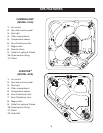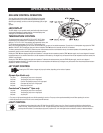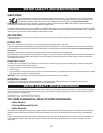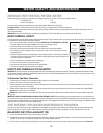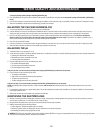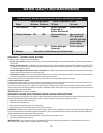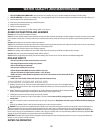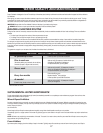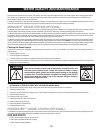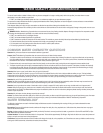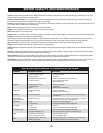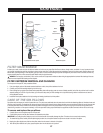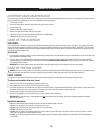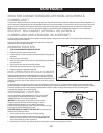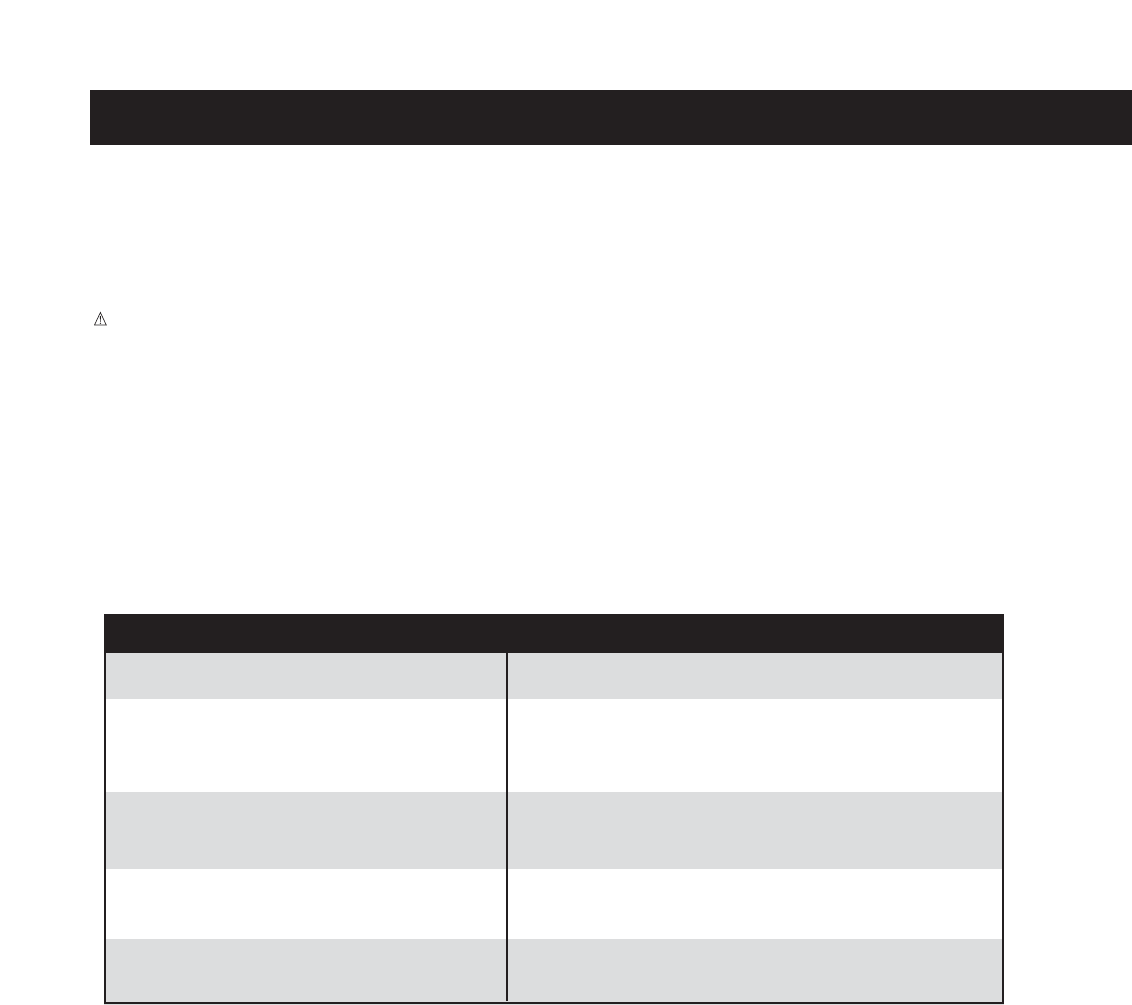
Super Chlorination is designed to “burn-off” the build-up of chloramines (used chlorine), to eliminate the chlorine smell and to allow the proper level of free chlorine to
be maintained.
When giving your water a super chlorination treatment, open the cover at least half way for twenty minutes to allow the chlorine gas to vent off. The high
concentration of chlorine gas which may exist as a result of super chlorination (not daily sanitation) may eventually cause discoloration or degradation to
the bottom of the cover, which would not be covered under the terms of your warranty.
IMPORTANT: Always allow the Free Available Chlorine to fall below 5 ppm before using the spa.
WARNING: Never leave an open spa unattended, especially if there are children present!
BUILDING A SANITIZER ROUTINE
During the first month of ownership, measure the sanitizer residual daily in order to establish standards for User Load and Usage Time versus Sanitizer
Needed.
• The User Load of the spa is the number of times anyone enters the spa.
• The Usage Time is simply the amount of time a user spends in the spa.
• Sanitizer Needed is the amount of Free Available Chlorine (FAC) needed to accommodate the number of users and their combined usage time.
For example, two spa users who regularly use the spa once an evening for twenty minutes create a specific and somewhat consistent demand on the
sanitizer. During the first month of ownership, these two users can determine exactly how much sanitizer to use in order to maintain the proper residual. If,
at any time, the user load and/or usage pattern changes dramatically (invited guests), the amount and frequency of sanitizer required increases
dramatically.
The greater the usage time, or the bather load, the faster the residual value is diminished.
SUPPLEMENTAL WATER MAINTENANCE
Proper water sanitation and mineral balance (pH control) are absolutely essential for a complete spa water maintenance program. Here are three other
popular water additives that are optional:
Mineral Deposit Inhibitors
As water evaporates from your spa and new water is added, the amount of dissolved minerals will increase. (Minimize evaporation by keeping the cover
on the spa whenever possible.) The spa water may eventually become “hard” (Calcium Hardness too high) enough to damage the heater by calcifying its
surface. Proper pH control
can minimize this.
Normal soap build-up will require water replacement regularly enough that mineral deposits normally are not a problem.
Occasionally, high iron or copper content in the water may produce green or brown stains on the spa. A stain and scale inhibitor may help to reduce these
metals.
NOTE: Well water may contain high concentrations of minerals. The use of a low water volume, extra-fine pore water filter will help to remove many of the
larger particles during the filling of the spa.
Foam Inhibitors
Spa water requires changing due to the buildup of soap in the water. Typically, soap will cause the spa water to foam when the jets are used. Soap is
WATER QUALITY AND MAINTENANCE
17
WATKINS
®
WATER TREATMENT GUIDE
At spa startup or refill
Follow spa Start-Up and Refill Procedures.
Prior to each use
(Test before adding any chemicals; do not add any
chemicals if proper or higher levels are found.)
Add one-half (1/2) teaspoon of sodium dichlor per
250 gallons, OR Add one (1) tablespoon
monopersulfate (MPS)* per 250 gallons
* MPS is an oxidizer, not a sanitizer
Once a week
Add one and one half (1-1/2) teaspoons of sodium
dichlor per 250 gallons, OR Add three (3) tablespoon
monopersulfate (MPS)* per 250 gallons
Every four months
Drain and refill your spa.
Replace Monarch
TM
silver cartridge
Follow spa Start-Up and Refill Procedures.
As needed
(If water is hazy, cloudy or has an odor)
Add one and one half (1-1/2) teaspoons of sodium
dichlor per 250 gallons.



